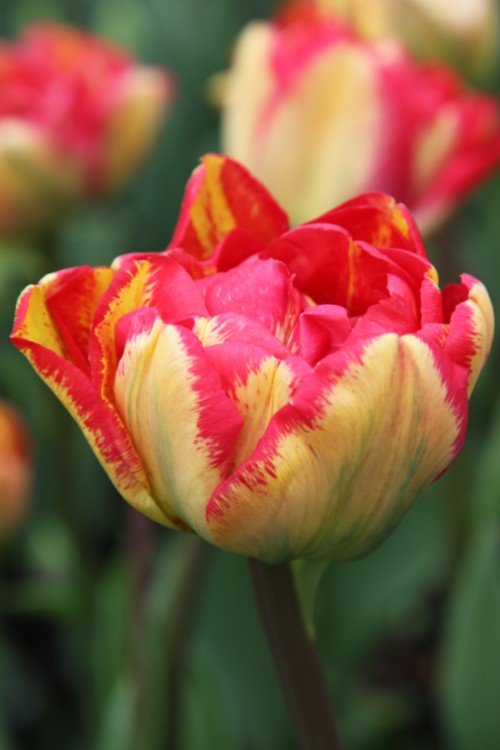
Sundowner
2079
$20.79
Unit price perAbout Sundowner
Embrace the elegance and allure of the Tulip Sundowner, and immerse yourself in the breathtaking beauty that this enchanting flower brings to your garden. This color combination is very special and suits every garden.
- Majestic Elegance: Each Tulip Sundowner bloom boasts a blend of creamy yellow, delicately infused with streaks of red.
- Striking Contrasts: The tulip's distinct coloration creates a remarkable contrast against lush green foliage, making it a striking focal point in any garden or floral arrangement.
- Irresistible Fragrance: Immerse yourself in the gentle, alluring scent that accompanies the Tulip Sundowner. Let its captivating fragrance envelop your senses, creating a truly immersive floral experience.
How to plant and take care of Sundowner
- Planting Depth: Place the bulbs in a well-drained soil bed at a depth of approximately 6 inches, ensuring they receive ample sunlight.
- Optimal Spacing: Allow sufficient space of about 4 to 5 inches between each bulb to enable proper growth and prevent overcrowding.
- Watering Needs: Keep the soil moist during the growing season, but be cautious not to overwater, as excessive moisture can cause bulb rot.
- Winter Protection: Provide a protective layer of mulch before winter sets in to shield the bulbs from extreme cold temperatures.
- Maintenance: Remove faded flowers to encourage the bulb's energy to focus on growth rather than seed production. Allow the foliage to wither naturally before trimming it back.
FAQs

